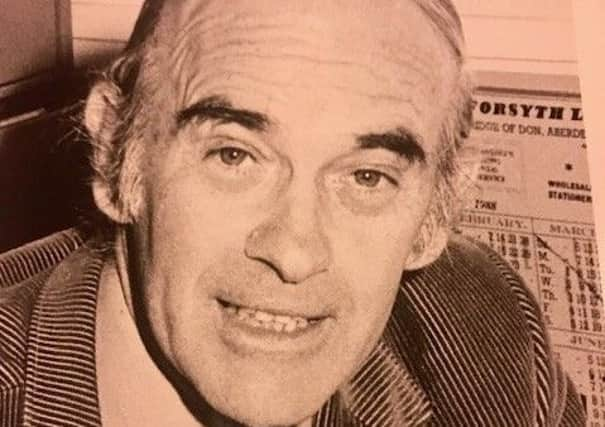Obituary: Leonard Gray, acclaimed Scottish painter whose work hangs in Duke of Edinburgh’s collection


Leonard Gray was a quietly industrious painter whose prodigious output, in his signature style of warm, subtle shades with trademark texture, was coveted by private and public collectors including the Duke of Edinburgh.
He first began exhibiting more than 65 years ago and produced more than 1000 works, three of which hang in the Duke’s collection of Scottish paintings at the Palace of Holyrood House. Many others feature in the Royal Scottish Academy, educational and medical establishments and on the walls of numerous friends’ homes.
Advertisement
Hide AdAdvertisement
Hide AdMany of his paintings are based on Scotland’s east coast, perhaps unsurprisingly for a man born in Dundee, who trained in Edinburgh and worked in Fife and Aberdeen.
The son of mercantile clerk Edward Gray and his wife Helen, he grew up during the Depression but enjoyed a carefree childhood playing street football, cycling around the countryside and honing his skills in cricket and table tennis.
He was educated at Dundee’s Rockwell Primary School and Harris Academy where, as a teenager, his interest in art emerged. But before he could embark on a career in the art world the Second World War intervened and saw him serve as an RAF navigator and physical training instructor at RAF Cosford, at Shifnal in Shropshire.
Fortunately for Gray, who was barely 20 when the war ended, he was not called upon for active service and after being demobbed in 1947 he was able to finally attend art school, starting a fine art course at Edinburgh College of Art the following year.
On graduating in 1952 he was awarded an Andrew Grant scholarship for postgraduate study in painting, which he followed with teacher training at Moray House School of Education.
Like many artists he worked full time, initially teaching at Beath High School in Cowdenbeath where he became a charismatic and popular member of staff, attracting the attention of a band of admiring schoolgirls who would wait at the gate each day just to say “Good morning” to him.
Gray married his Maths teacher wife Alexina in 1963, two years after they had been introduced at a Dunfermline cafe, and the couple moved to Aberdeen in the late 1960s when he took up a post as lecturer in drawing and painting at Aberdeen College of Education. He was to remain there for the next 20 years.
Though he became an avid antiques collector following his marriage, art was his life. He had been elected a member of the Royal Scottish Society of Painters in Watercolour in 1968 and served on its council for many years.
Advertisement
Hide AdAdvertisement
Hide AdA decade earlier he had been a founder member of the 57 Gallery in Edinburgh and in 1969 became a member of Aberdeen Artists Society.
A landscape painter who worked in mixed media, mainly gouache, the Fife fishing towns and East Neuk countryside provided subjects, along with the scenery on his doorstep on Deeside when he moved to Aberdeen and, latterly, travels to Europe and the Far East.
He developed an original technique using a collage of paper shapes on a sketched outline, followed by acrylic paint and sponging to produce patches of rough, textured paint, before re-drawing and painting the surface.Describing his work, he once observed: “A painting is like life itself. People say life has tension and contrast and art is supposed to reflect life. In every painting there are tensions – light and dark colours, smooth paint and rough textures, warm and cold colours. These tensions have to be solved and made to harmonise – just like life.”
Over the decades he exhibited prolifically at the Royal Scottish Academy and at numerous other shows including Scottish Arts Council events, at the Royal Pavilion, Brighton, the Morrison Portrait Award Exhibition and, between 1995 and 2001, the Singer Friedlander Watercolour Competiton.
Following retirement in 1990 his landscapes won the John Laing London prize for three consecutive years between 1996 and 1998 and the major award of the Council of the Royal Scottish Society of Painters in Watercolour. Earlier he was recognised with the Scottish Brewers/Stirling University landscape prize and the Educational Institute of Scotland Purchase award, among others.
Much sought-after, his work hangs in collections all across the country including in education authorities, Heriot Watt and Aberdeen Universities, banks, hospitals and the National Trust.
A gentle, shy man, with a sparkling wit, his sense of fun was not diminished by a diagnosis of Alzheimer’s disease and vascular dementia in his eighties. When a visiting nurse commented on a painting, querying if it featured snow, his lightning reply was “No, I ran out of paint!”
He is survived by his wife Alexina, their son Euan, daughter Jennifer and grandchildren James and Rebecca.
ALISON SHAW